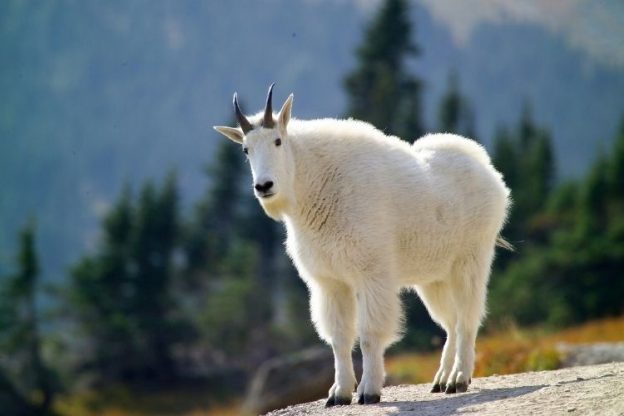On the off chance that you are raising goats for meat, you may experience difficulty choosing which breeds are ideal. While any goat breed can be raised for meat, explicit sorts are reared explicitly for the excellencies generally significant for creating eatable meat. For instance, most meat goat species are reared to develop rapidly and put on weight, with little accentuation on delivering milk. While milk goats are required to deliver for quite a while, it’s ideal for a meat goat to develop rapidly and be prepared for the market as quickly as time permits. Nobody anticipates that a meat goat should live to mature age.
On the off chance that you are raising goats for meat, you don’t have to purchase a show goat—indeed, you shouldn’t. Show goats and meat goats are brought up in a wide range of ways. Furthermore, you don’t have to purchase enrolled stock. Most meat makers think that its ideal to choose a decent, full-breed buck and breed him with a few blended variety babysitters. Whatever market you find for your goat meat will figure out what characteristics you need in the children.
Here are some eminent varieties regularly suggested when raising goats for meat.
Boer
Boer goats were reproduced in South Africa for meat and chose for their boss body shape, high development rate, and richness. These enormous encircled creatures might be white and ruddy earthy colored, or all red with short hair and dark, earthy colored, or red markings on the head and neck. Boers have short horns that are bended near the head. They have long, pendulous ears, and are known for being submissive.
The Boer is profoundly impervious to malady, and it does well in hot, dry, and semi-desert regions. Arriving at butcher development in around 90 days, they can arrive at a size of around 190 to 230 pounds for does and 200 to 340 pounds for bucks.
Spanish
Before Boer goats opened up in the United States in the last part of the 1980s, Spanish goats were the standard meat goat breed, particularly in the South. These goats are relatives of the goats brought by Spanish pilgrims, advancing toward the United States by means of Mexico. They’re medium-sized and lean, generally short-haired, and they come in all hues. Spanish goats have long, regularly twisty horns. They’re at times viewed as more a classification of a goat than a characterized breed.
Spanish goats have been supplanted by Boers as the most loved meat goat in the United States, yet they have discovered another reason—for controlling intrusive brush plants, for example, buckthorn.
Brush
The term brush goat is an overall term used to allude to different varieties and breed blends that are known to be versatile and tough, the two of which are helpful in their ability for eating brush and undesirable vegetative development. They are otherwise called slope goats, briar goats, or local goats. Much the same as the Spanish goat, this is certifiably not a particular variety yet rather a classification of goats. Brush goats are typically hereditary hybrids of meat goats and dairy goat breeds.
Tennessee Fainting Goat
Tennessee swooning goats are, truth be told, from Tennessee and are additionally called myotonic goats, anxious goats, wooden goats, or firm leg goats. At the point when surprised, these goats go inflexible and “weak” or tumble down. Myotonic goats are tough, fruitful, and have a long reproducing season.
Swooning goats are commonly dark or white, and they might be short-haired or long-haired. They are medium-sized creatures, with guys some of the time arriving at 200 pounds. The eyes have a special projecting quality. Fairly uncommon, this species is some of the time kept as a curiosity example or as a family pet.
Kiko
Enormous surrounded, white, tough, and ready to flourish under helpless conditions, the Kiko was created in New Zealand and brought to the United States during the 1990s. Kikos are carefully meat-delivering goats, with smaller, solid bodies and sensational spiraling, outswept horns. Quickly developing, a grown-up Kiko male can arrive at 300 pounds.
On the off chance that you have a ton of land accessible, Kikos might be a more practical variety than Boers, since they lean toward harsh brushing an area and require little consideration.
Dwarf
Reared from the West African dwarf goat breed, present day dwarf goats are kept generally as pets, yet they do have some potential for meat since they have a minimized and substantial body and are ripe unavailable. They regularly develop to a develop size of 50 to 75 pounds for females and 60 to 86 pounds for guys. An assortment of strong hues and examples are accessible. Dwarf goats breed much of the time, each 9 to a year.
Breed Crosses
Frequently, dairy goat breeds, for example, Nubian, Alpine, Toggenburg, and Saanen are crossed with Boers to deliver creatures with phenomenal meat.
There are additionally some new crossbreeds accessible, delivered by intersection diverse meat goat species. A portion of the more normal new meat-goat crosses include:
- Moneymaker: Moneymakers are parented by first intersection Sannen and Nubian breeds, which are then reared with Boers.
- Texmaster: This is a medium variety in size, a hybrid of Boers and Tennessee blacking out goats, created in Texas by Onion Creek Ranch.
- Savanna: This variety opposes warmth and dry spell. They are strong and have a short, white coat with a cashmere undercoat to assist them with remaining warm in colder winters. Exceptionally versatile to different climate conditions, Savanna goats are a decent decision for places with climate challenges. They make great moms.

